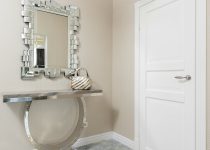How Can You Effectively Disinfect Unfinished Wood Surfaces?
When it comes to disinfecting unfinished wood surfaces, you need to approach it with care. Unfinished wood can absorb moisture and chemicals, which can lead to damage. So, what cleaning solutions are safe and effective? Understanding the right techniques is crucial for maintaining the wood's integrity while ensuring it's properly sanitized. Let's explore the best methods that balance cleanliness with preservation.
Table of Contents
Key Takeaways
- Mix equal parts water and white vinegar in a spray bottle for a safe disinfectant solution.
- Lightly mist the wood surface and allow it to sit for about 10 minutes.
- Wipe the surface with a soft cloth to remove excess moisture after disinfection.
- For tougher disinfecting, use a diluted bleach solution (1 tablespoon per quart of water).
- Ensure proper ventilation when using any disinfectants to protect your health.
Understanding the Nature of Unfinished Wood
Unfinished wood is a natural material that requires special care. Unlike finished wood, it's porous and can absorb moisture, dirt, and oils easily. This absorbency makes it more susceptible to damage and staining, so you need to be cautious when using cleaning products.
When you handle unfinished wood, you're interacting with a surface that showcases its raw beauty, but it also means you must be mindful of how you treat it. Regular maintenance is crucial, as it helps prevent the buildup of grime and extends the wood's lifespan.
Always remember that harsh chemicals can cause irreversible harm, so you'll want to choose your cleaning methods wisely. Understanding these characteristics is key to preserving your unfinished wood surfaces.
Safe Cleaning Solutions for Unfinished Wood
Maintaining the beauty of raw wood surfaces requires careful selection of cleaning solutions. For unfinished wood, you'll want to avoid harsh chemicals that can damage the surface. Instead, opt for natural options like a mixture of vinegar and water, which can effectively clean without causing harm.
A few drops of mild dish soap in warm water also works well. Always test any solution on a small, inconspicuous area first to ensure it won't affect the wood's appearance.
Microfiber cloths are ideal for wiping down surfaces, as they won't scratch or leave lint behind. Remember, gentle care will help preserve the natural beauty of your unfinished wood while keeping it clean and fresh.
Effective Disinfection Techniques
While it's important to keep your unfinished wood surfaces clean, effective disinfection techniques are equally crucial to eliminate germs and bacteria.
Start by mixing a solution of equal parts water and white vinegar in a spray bottle. Lightly mist the surface and let it sit for about 10 minutes. This will help kill a variety of pathogens without damaging the wood.
Afterward, wipe it down with a soft cloth to remove excess moisture. For tougher disinfecting, consider using a diluted bleach solution—one tablespoon of bleach per quart of water—but test it on a hidden area first.
Always ensure proper ventilation when using any disinfectants. By following these techniques, you can maintain a healthier environment without harming your wood surfaces.
Maintaining the Integrity of Your Wood Surfaces
Keeping your unfinished wood surfaces clean and disinfected is only part of the equation; you also need to protect their integrity. Regular maintenance ensures your wood remains beautiful and functional. Consider using natural oils, like linseed or tung oil, to nourish the wood and create a protective layer. Also, avoid harsh chemicals that can strip away essential oils and damage the surface.
| Action | Frequency | Purpose |
|---|---|---|
| Dusting | Weekly | Prevent scratches |
| Oil application | Every 6 months | Nourish and protect |
| Clean spills promptly | As needed | Prevent staining |
Frequently Asked Questions
Can I Use Bleach on Unfinished Wood Surfaces?
You shouldn't use bleach on unfinished wood surfaces. It can damage the wood and affect its appearance. Instead, consider milder cleaning solutions that won't harm the natural texture and finish of the wood.
How Often Should I Disinfect Unfinished Wood?
You should disinfect unfinished wood surfaces regularly, ideally every couple of weeks, especially in high-traffic areas. If spills occur or the surface looks dirty, clean it immediately to maintain hygiene and prevent damage.
What Should I Avoid When Cleaning Unfinished Wood?
When cleaning unfinished wood, avoid using harsh chemicals, excessive water, or abrasive scrubbers. These can damage the wood's surface. Stick to gentle cleaners and soft cloths to maintain the wood's integrity and appearance.
Is It Safe to Use Vinegar on Unfinished Wood?
Using vinegar on unfinished wood isn't recommended. It can damage the wood's surface and lead to discoloration. Instead, opt for gentler cleaning solutions specifically designed for unfinished wood to maintain its integrity and appearance.
Will Disinfecting Damage the Wood's Appearance?
Disinfecting can potentially damage unfinished wood's appearance, especially if harsh chemicals are used. To maintain its look, opt for gentle cleaners and always test in an inconspicuous area before applying it to the entire surface.



